Don't wanna be here? Send us removal request.
Text
How OTT Platform is changing the online video landscape?
If you are familiar with the world of online video, you may have noticed the acronym OTT. Consider coming home from work and looking for a show to watch on Netflix. Learn a new recipe on any YouTube channel. Rent a movie on Google Play Movies to watch over the weekend. We bet you have experienced at least one of these three examples!
Using an OTT Platform is a concept that emerges as an alternative to cable or satellite television, looking for a new way to entertain the audience. And it refers to all video content that can be distributed online without the need for a TV service provider.
Think about big video distribution platforms like YouTube and how the way they produce and consume content, especially video, has changed fast. Now, in addition to consuming content, “everyday people” as well as small, medium and large companies, are able to be active producers and distributors of content.
This turnaround in the audiovisual world was mainly due to the arrival of streaming technology, bringing the possibility of watching a video without the need to download the files. That’s how OTT Internet video distribution began, with the ability to watch as many videos as you like, anywhere in the world and on any device!
Nowadays, anyone who has a device to record (it can be a mobile phone!) and internet access can generate content and distribute their videos on streaming platforms such as YouTube, paid platforms or even creating their own Web TV.

The corporate world has adapted to this reality, and many companies have begun to create their own OTT platform to distribute their content, whether it’s for internal communication, focusing only on employees, or for external communications, with content that is relevant to the business.
How to create your own OTT Platform?
1. Choose OTT Video Format
First of all, you have to decide which type of OTT video you want to work on: live or VOD. Remember that depending on your strategy the choice maybe for both. Below know more about them:
a) Live
Live is a live webcast, so the video is recorded and distributed in real-time.
It’s a format that social networks have been working on most actively for a few years, highlighting the role of their users. Being live is already very popular on social networks like Facebook, Instagram, and YouTube.
Despite popularities among digital influencers, going live can be used for a variety of other purposes, such as broadcasting lectures, courses, webinars, concerts, and events. What’s more, going live is a great way to generate interaction with your audience.
b) VOD
The acronym for video on demand, VOD is a video that is recorded before it airs. Therefore, in this format, unlike going live, there may be video edits and rewrites of some parts to deliver better final content.
This is the most common video format as we are more used to consuming it in movies, series and other videos within Netflix and YouTube, for example.
Video on demand gets its name precisely because viewers decide what they want to watch and when they want to watch, without relying on a fixed schedule.
2. Choose a business model
Now is the time to choose the business model that will be used on your OTT platform to make it profitable. Take a look at the three types of business models available for online video and try to choose the one that best fits your reality:
a) TVOD or Transactional: This is the model commonly known as pay-per-view, i.e. the customer only pays for the content they consume without the need for a subscription.
b) SVOD or Subscription: This model already works by subscription, so you can make periodic charges, usually made monthly, semi-annually or annually.
c) AOTT or Advertising: The revenue source for this business model comes from placing ads within the videos or within the platform.
3. Choose platform
The time has come to think about how your OTT platform will be structured. If you have a good team of developers and knowledge about it, you can build the platform internally and from scratch.
But as this is not true in most cases, as it may lack the manpower or know-how, there are platform options on the market that make it easier for you to do your job.
Will OTT make traditional television disappear?
Traditional television will not disappear, simply creating content is now a challenge for the studios, since they must create attractive and quality content to keep the audience connected.
0 notes
Link
#consumerelectronics#augmentedrealitydevices#voicecontrolleddevices#electronicsindustry#innovation#technology
0 notes
Text
Consumer Internet of Things: New Value Creation will change to Marketing
The speed and dimension of the change we are experiencing in all aspects of human society, from productivity to spirituality, has far exceeded the ability to absorb it. That is why the need to create skills to interpret what IoT (internet of things) implies to take concrete actions in the businesses we manage and to maximize the opportunities left at the table.
Why I chose this topic?
Between 2018 and 2025, this will undoubtedly be the universal way to add value to the product and service experience of the brands.
The Consumer Internet of Things will be the backbone of value creation because it reduces friction and generates zero supply/demand mismatch: read demand and their offer with total success. Do not offer to see if there is demand, offer when you see that there is demand or when you intuit it for the information that surrounds the user's behavior, that is, it generates a change of model. We don't push demand, demand pushes us.
Internet of Things in practice:
What are the expectations of consumers today? "Have" versus "Experiment": pay only what is used without generating waste, goodbye to overconsumption, goodbye to overcharge. Yes to meaningful consumption, to a personalization of everything, life in real-time, without tolerance to frustration (to error), take care of the planet.
Consumer Internet of Things will allow a flow of particular data to install all these desires together in the consumption of any person, not as a premium movement, but as the daily idea of experiences.
Price plans will be made according to behavior and thus, your dentist, connected to the Bluetooth of your brush, will charge you more if you do not brush your teeth and less if you do it regularly
We will be able to enter a store and activate our mobile platforms, which will be the “remote control of things”: Our refrigerators will tell us that milk is missing and will be purchased in a direct and automatic corner shop. You will get the photo of a party for walking on exclusive roads and you will pay at a distance, the insurance will know about it and will raise the premium.

Thus, consumer acts will be fragmented and individualized to the point that it is very likely to think of absolute product-person disintermediation. Price plans will be made according to behavior and thus your dentist, connected to the Bluetooth of your brush, will charge you more if you do not brush your teeth and less if you do it regularly.
Edge Computing:
If we ever thought we were in control, if with suspicion and some fear we saw how the control was hacked by social networks and by that consumer who years ago we put him “smart-citizen”, now it is possible to think that the data that our products, our cities, our hospitals, etc. will be the basis of a commercial management done at the cost of statistics and algorithms. It will also have an AI (Artificial Intelligence) that will analyze and process the huge volume, not only store it in the cloud as it is produced today but also generate learning and offers in real-time.
It seems quite obvious that marketing should be rather a personalized content development, the creation of improved experiences with AI using the data of things (IoT)
All this will be the so-called Edge Computing, “which allows the data produced by the Internet of Things devices to be processed closer to where they were created, instead of sending them through long journeys to reach data centers and computing clouds.
How to market in the middle of this reality?
The multi-billionaire question: How do I market in the middle of this direct relationship between my product and my client?
Well, it seems quite obvious that marketing should be rather a development of personalized content, the creation of improved experiences with AI using the internet of things (IoT). It also seems evident that it will become a very scientific-humanistic discipline, the new mix for digital times, and will cease to have this macro communicational component to fragment itself more and more in pursuit of individual experiences.
youtube
#ConsumerInternetOfThings#ConsumerIoT#iiot#artificialintelligence#bigdata#technology#machinelearning#tech
0 notes
Text
Top 5 IoT Cloud Platforms in 2019
After learning what is the internet of things and learning about its fundamental components it’s time to choose an appropriate IoT Cloud Platform. But first, you should learn a bit about IoT hardware.
What is an IoT platform? In simple words, the purpose of any IoT device is to connect with other IoT devices and applications (cloud-based mostly) to relay information using internet transfer protocols.
The gap between the device sensors and data networks is filled by an IoT Platform. Such a platform connects the data network to the sensor arrangement and provides insights using backend applications to make sense of a plethora of data generated by hundreds of sensors.
In light of the possibilities that the internet of things is offering tech companies has started capitalizing it. There are many IoT platforms available now that provide an option to deploy internet of things applications on the go.
While there are hundreds of companies and a few startups venturing into IoT platform development, players like Amazon and Microsoft are way ahead of others in the competition. Read on to know about the top 5 IoT platforms you can use for your applications.
1. IoT platform: Amazon Web Services (AWS):
Last year Amazon announced the AWS IoT platform at its Invent conference. Main features of AWS IoT platform are:
Registry for recognizing devices
Software Development Kit for devices
Device Shadows
Secure Device Gateway
Rules engine for inbound message evaluation
According to Amazon, their IoT platform will make it a lot easier for developers to connect sensors for multiple applications ranging from automobiles to turbines to smart home light bulbs.
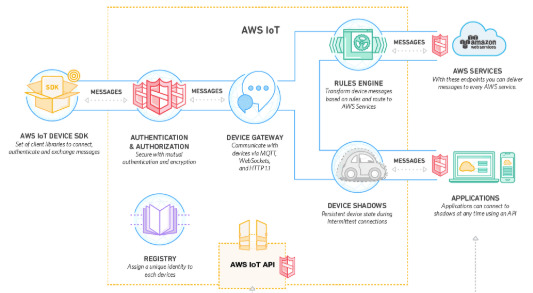
Taking the scope of AWS IoT to the next level, the vendor has partnered with hardware manufacturers like Intel, Texas Instruments, Broadcom and Qualcomm to create starter kits compatible with their platform.
2. IoT Platform: Microsoft Azure:
Microsoft is very much interested in bringing up products for the internet of things. For the initiative the Microsoft Azure cloud services compatible IoT platform, the Azure IoT suite is on the offer.
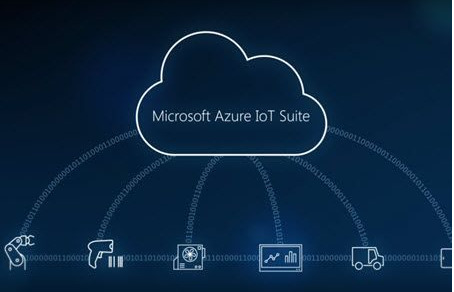
Features included in this platform are:
Device shadowing
A rules engine
Identity registry
Information monitoring
For processing the massive amount of information generated by sensors Azure IoT suite comes with Azure Stream Analytics to process massive amounts of information in real-time.
3. IoT Platform: Google Cloud Platform: Google can make things happen. With its end-to-end platform, Google cloud is among the best IoT platforms currently. With the ability to handle the vast amount of data using Cloud IoT Core, Google stands out from the rest. You get advanced analytics owing to Google’s Big Query and Google Cloud Data Studio.
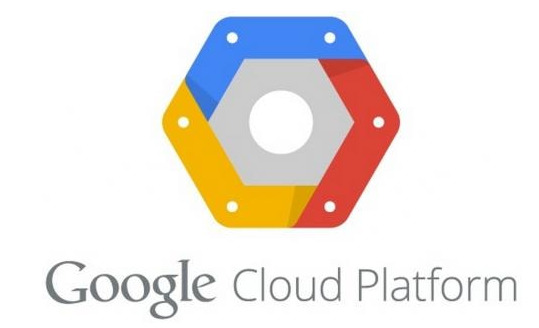
Some of the features of the Google Cloud platform are:-
Accelerate your Business
Speed up your devices
Cut Cost with Cloud Service.
Partner Ecosystem
4. IoT Platform: Samsung Artik:
Samsung Electronics launched Artik, which provides end to end IoT platform for the next generation products and services. Samsung Artik is known for providing complete security to your products which often gets neglected. With services like Artik Module, Cloud, Security and ecosystem Samsung aims to provide a platform that takes care of your total security. Artik aims to provide a fast and open platform that is responsible for developing and managing your products.
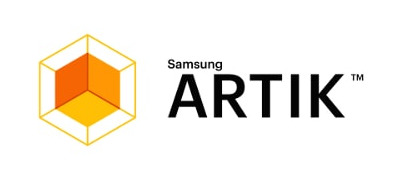
Artik platform offers the following features: –
Cloud: Easy to use; can tap into new revenue streams.
Modules: Built for performance and security.
Security: Protects from hacking.
5. Cisco IoT Cloud Connect:
Cisco’s IoT platform is for mobile operators offering:
Voice and data connectivity
SIM lifecycle management
IP session control
Customizable billing and reporting
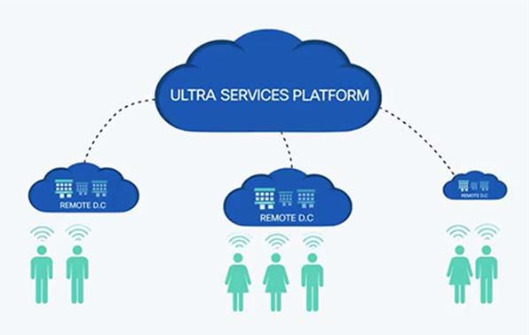
Lately, Cisco also partnered with National Farmers’ Federation in Australia to provide IoT in agriculture solutions.
#IoTCloudPlatform#BigData#ArtificialIntelligence#Blockchain#iiot#internetofthings#cloud#innovation#blockchaintechnology
1 note
·
View note